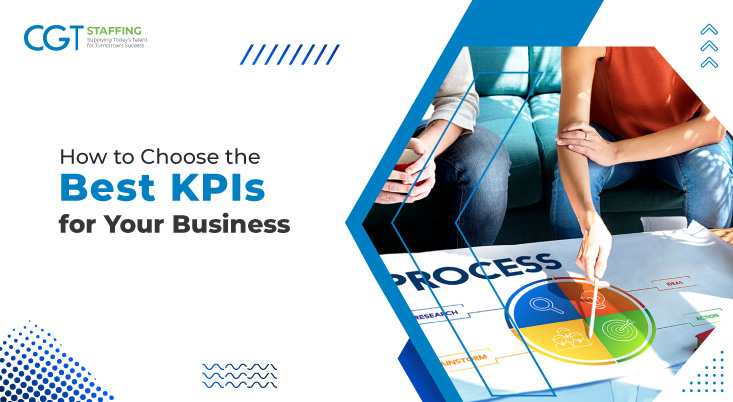According to Peter Ducker, globally known for his books and thoughts on workforce management, “You can’t improve what you don’t measure.” This precept applies to the processes at any organization, including the key performance indicators that track progress against business objectives. KPIs can be created to monitor the performance of an entire organization, department, or individual team members based upon clear and pre-determined goals.
Every organization has its distinctive targets and unique KPIs. It is crucial to understand that different factors govern the application of KPIs for every organization. As such, a standard set of key performance indicators across organizations is not applicable. Read on to determine how to choose the most suitable KPIs for your particular business.
Table of Contents
Define Objectives
The rationale for creating KPIs is to help track viable progress in achieving an objective. In order to do so, the objectives for any time period should be clearly defined; for instance, onboarding X number of new customers instead of a vague determination to acquire more customers. An organization can further divide such goals – for instance, X number of new customers monthly, quarterly, or yearly according to business capability. They can be established for both long and short-term objectives.
Select KPIs That Are Clearly Linked to Your Business Objectives
Most long-term business objectives of businesses tend to remain fairly consistent. Short-term objectives are more dynamic. Prioritize your objectives according to the nature of the business and its specific needs and then choose the most suitable KPIs for those objectives. The best KPIs are both simple to understand and quantifiable.
Prioritize KPIs Based on Your Company’s Stage of Growth
Based on your company’s financial stance and outlook, certain KPIs should be prioritized over others. For instance, a business in its formative stage should focus on developing the right business model to achieve sustainability. As initial goals are formulated, a business can hire employees using different recruitment models to implement and ingrain this working strategy. As expansion and stasis occur, the same business can begin to adopt more refined goals, such as lowering the cost per acquisition and increasing the lifetime value of customers.
Understanding the Types of KPIs
There are two types of KPIs: Leading indicators and lagging indicators.
Leading Indicators: These calculate the possibility of a business achieving a goal. They are predictors of a business’s future success. A few examples of these KPIs include conversion rates and activities of the sales department for upcoming months.
Lagging Indicators: These display the performance of a business based on recorded (past) data. For instance, for hiring managers, this data might encompass the number of hires as a means of quantifying strategies for talent acquisition. The performance reports of the marketing and sales departments are other examples of lagging indicator metrics. Understanding, choosing, and measuring both these types of KPIs is critical for any business’s success.
Avoid Vanity Metrics
Vanity metrics are those that look good on paper but do not guarantee future success. The downside of accounting for these empty metrics is that key decision-makers and departments might adopt a false notion of guaranteed success. For instance, a surge in social media follows and a staggering number of app downloads in response to a marketing campaign do not guarantee conversion to paid users. It is advisable to steer clear of any misleading metrics that might create an illusion.
Focus on Select KPIs
Choosing fewer KPIs linked to your business is better than accommodating a slew of data. Monitoring many performance indicators simultaneously usually creates confusion and may distract a business from its fundamental goals.
The optimum number of KPIs depends on the nature of the business and its objectives. Ideally, the fewer the KPIs, however, the better.
Conclusion
The right KPIs are important to gain insights, devise a strategy or revamp the existing ones to meet your business objectives, and evaluate performance along the way. In a larger sense, they help teams, management, and stakeholders make better decisions drive the company to sustainable growth and success.
